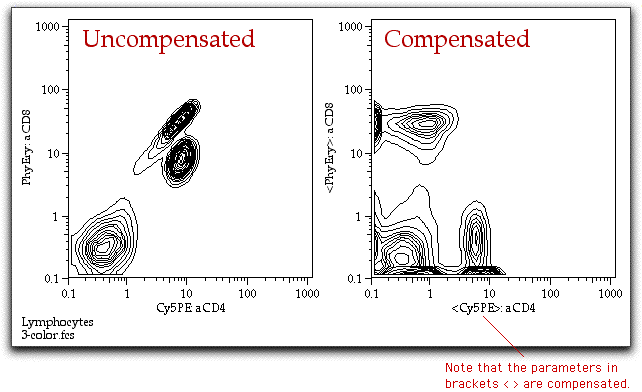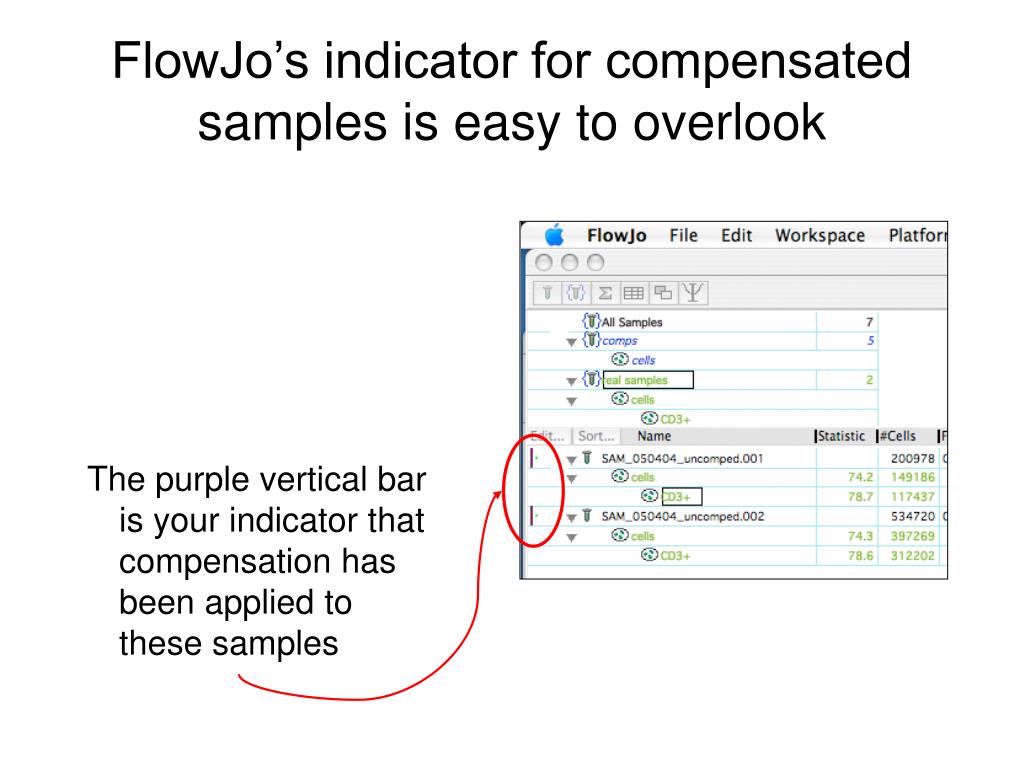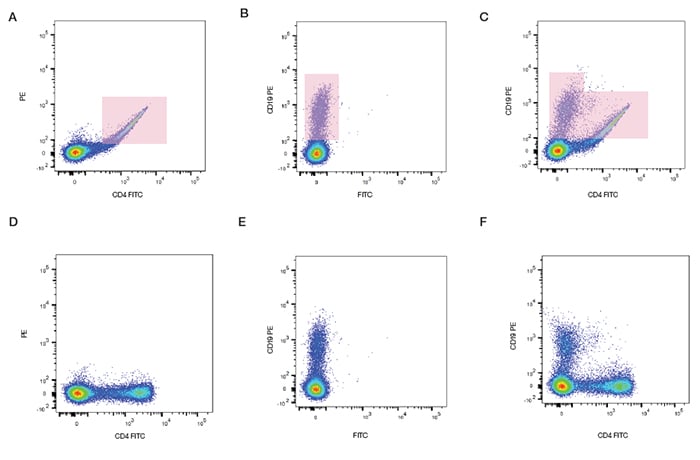

The compensation using the first gate – on the most positive of the positive cells – gave the most accurate results. Again, the compensation is correct when the MFI of the positive and negative populations match. To check the accuracy of the compensation determined by the automated compensation tool, I applied the compensation matrix to the same file and checked 5 plots. The whole dim/low-expressing population of cells, avoiding the bright/high-expressing cells.

The entire positive population of cells, including dim and bright cells.The whole bright/high-expressing population of the positive cells, assuming this control has a bright population and a dim population.The most positive (brightest) of the positive cells, which cuts through a high-expressing population and would never be used for analysis.

I tested four different gate positions (Figure 2): To demonstrate the effect of gate placement I’m using FlowJo’s automated compensation tool, though this should be applicable to any comparable software. Thus, the accuracy of the compensation is dependent on a subjective gate placement. The flaw of automated compensation tools is that the user usually determines where to set the MFI for each population by placing gates on the positive and negative populations. Compensation determined to be correct when the median fluorescence intensity (MFI) of the positive population is in line with the MFI of the negative population (Figure 1). Setting Up the Automated Compensation Toolīefore I discuss gate placement I want to quickly go over how autocompensation tools work. Gate placement is a critical component in determining the outcome of an automated compensation tool. Yes, some of the tools do have automated gate placement, but that feature often fails to generate appropriate gates. The part that is often overlooked is that automated compensation tools are not fully automated – they require users to subjectively set gates on positive and negative cells within each control. In this post I’d like to demonstrate that poor controls are not always the cause. Why is it difficult to get accurate results from automated tools? The only explanation that I’ve heard from the flow cytometry experts is that suboptimal results are caused by poor quality compensation controls.
COMPENSATION IN FLOWJO MANUAL
However, people often struggle to get good results from the automated compensation tools and will turn to manual compensation to fix any errors. When calculating compensation, automated tools are the gold standard. For more tips on spectral unmixing specifically, see this video.

It saves you time, and generally provides better results. Learn more about AutoSpill here.Įdit October 21, 2021: It should be noted that the tips for gate placement described in this post can be applied to spectral unmixing as well, just replace the term “compensation” with “unmixing”. In essence, AutoSpill uses iterations of linear regressions to get the best compensation or unmixing matrices, and removes the need for gating the positive and negative fractions of your controls. introduced AutoSpill, which resolved the gating issue raised in this blogpost. Edit January 19, 2023: The 2021 Nature paper by Carlos P.


 0 kommentar(er)
0 kommentar(er)
